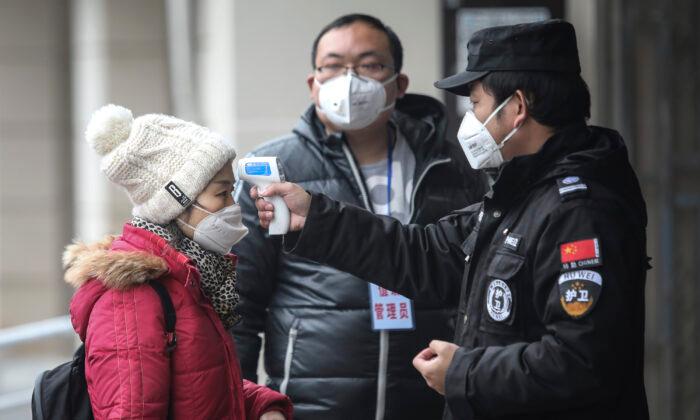Initial Response
The outbreak, with 27 contracting the illness, was announced on Dec. 31 by Wuhan health authorities—only after an official document was leaked onto the internet the day prior and circulating widely.The first patient contracted the virus on Dec. 12, according to the announcement.
Wei said he and his doctor friends knew the disease could be dangerous, but did not speak up because they were afraid the authorities would punish them.
Laurie Garrett, a health policy analyst and formerly a Pulitzer-winning journalist for her coverage of the 1995 Ebola outbreak, believes Chinese authorities mishandled the initial response to the outbreak, fueling its current spread. “The kind of alert and alarm that should have been out did not go out until now,” she said.
Reporting Figures
Five days into the new year, the number of cases jumped to 59.On Jan. 9, authorities said the illness was likely caused by a new type of coronavirus—a type of pathogen that causes diseases such as SARS (severe acute respiratory syndrome) and MERS (Middle East respiratory syndrome).
But Wang Guangfa, one of China’s top respiratory specialists and part of a senior-level expert group within China’s National Health Commission, assured the public that the disease could be contained, in a Jan. 10 interview with the Chinese Communist Party’s mouthpiece newspaper People’s Daily.
Garrett said the figures from Chinese authorities are likely “a gross understatement” of the actual situation.
Lack of Precautions
Meanwhile, the Wuhan government did business as usual.The city only began screening passengers and checking body temperatures at airports, railway stations, intercity coach stations, and maritime passenger terminals on Jan. 14.
The WHO warned that the disease could be contagious. Chinese authorities confirmed that there was a case of a woman who had never visited the Wuhan food market linked to the outbreak—but was diagnosed with the disease after her husband, who worked at the market, contracted the virus.
It wasn’t until Jan. 20 that the Chinese regime confirmed human-to-human transmission.
From the photos shared by the local government and netizens who attended, nobody wore a facial mask at the event. People shared the dishes family-style, using their chopsticks to pick up food from the same plates.
Patients Turned Away
The city’s residents have meanwhile complained that they or sick family members have been turned away from hospitals because the hospitals were too full.Netizen Huang Xiexie posted on Chinese social media WeChat that her mother started to show symptoms on around Jan. 10, and first attended a hospital on Jan. 17. Later on Jan. 20, a doctor at Jinyintan Hospital informed her mother that she had contracted the virus, but refused to arrange treatment due to lack of space.
Huang’s mother then had to travel around the city to find another hospital to receive treatment.
Another netizen He Lianna posted on Weibo on Monday that her husband has been receiving treatment at Wuhan Infectious Disease Hospital since Jan. 2. Her 70-year-old father who lives together with them then started exhibiting symptoms on Jan. 8. However, they were unable to find a hospital for him because they were all full.
“The ambulance staff refused to send my father to a hospital because hospitals refused to receive patients with fever symptoms,” He wrote.





